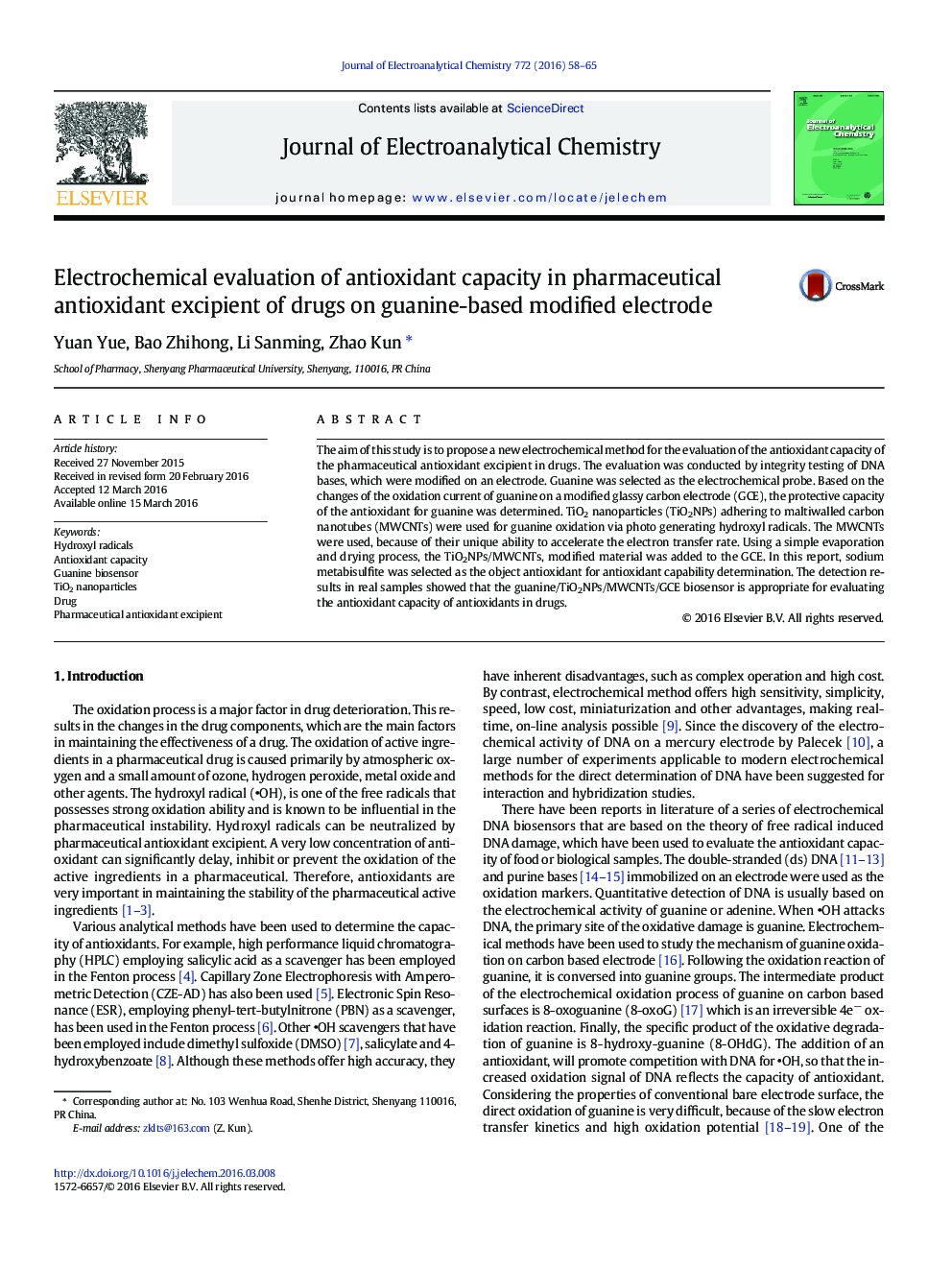| Article ID | Journal | Published Year | Pages | File Type |
|---|---|---|---|---|
| 217891 | Journal of Electroanalytical Chemistry | 2016 | 8 Pages |
•A guanine-biosensor for the antioxidant capacity quantification of antioxidants in pharmaceutical excipients was reported.•The antioxidant capacity is based on the changes of the oxidation current of guanine on a TiO2NPs/MWCNTs modified electrode.•TiO2NPs were used owing to their ability to generate the hydroxyl radicals and to immobilize the guanine.
The aim of this study is to propose a new electrochemical method for the evaluation of the antioxidant capacity of the pharmaceutical antioxidant excipient in drugs. The evaluation was conducted by integrity testing of DNA bases, which were modified on an electrode. Guanine was selected as the electrochemical probe. Based on the changes of the oxidation current of guanine on a modified glassy carbon electrode (GCE), the protective capacity of the antioxidant for guanine was determined. TiO2 nanoparticles (TiO2NPs) adhering to maltiwalled carbon nanotubes (MWCNTs) were used for guanine oxidation via photo generating hydroxyl radicals. The MWCNTs were used, because of their unique ability to accelerate the electron transfer rate. Using a simple evaporation and drying process, the TiO2NPs/MWCNTs, modified material was added to the GCE. In this report, sodium metabisulfite was selected as the object antioxidant for antioxidant capability determination. The detection results in real samples showed that the guanine/TiO2NPs/MWCNTs/GCE biosensor is appropriate for evaluating the antioxidant capacity of antioxidants in drugs.
